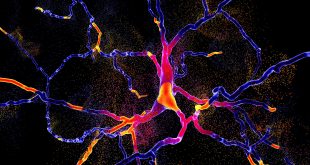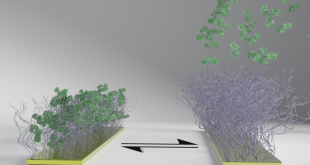Getting to the Root of the Matter
After growing up in San Diego, Leon Kochian headed north in 1978 to University of California’s Berkeley campus to pursue his studies in plant physiology. In 1984, he moved farther north – this time to Cornell University in Ithaca, NY – to spend 30 years at the school’s Robert W. Holley Center for Agriculture and Health, where he was the Director of the USDA Agricultural Research Service. When he told his wife a few years ago he had an offer to join the University of Saskatchewan, the joke in their house was that a move to the North Pole must be the next logical step.
“It turned out we moved to the sunniest city in Canada from upstate New York, which has the second-greyest city in the U.S. So we traded for sunshine and colder weather, which has not been much of an adjustment,” he says. “We just built our dream house, so we’re planning to stay for a while.”
Now a professor in the school’s Departments of Plant Science and Soil Science, Kochian is also the Canada Excellence Research Chair in Global Food Security and Associate Director of the Global Institute for Food Security (GIFS), a public-private partnership founded by the university, fertilizer maker Nutrien and the province to help deliver innovation to agriculture.
Kochian’s research deals with the molecular biology, physiology and genetics of mineral ion transport and root biology processes as they relate to mineral nutrient acquisition, plant response to abiotic environmental stresses, and the role of root architecture in nutrient acquisition efficiency. Or, as he puts it, “It’s how we can improve crops so that they can adapt to different soil environments and do more with less inputs.”
It’s the kind of research he believes is needed now more than ever. “We’re going to need to grow more food in the next 30, 40 years than we’ve grown in the past 10,000 years,” he explains. “When I worked for the U.S. Dept of Agriculture, they said the best kept secret in government is agricultural research. Famines, political unrest – if you want a stable world, then you need to be able to grow more food. And I think we can do it.”
Kochian says he chose to specialize in the study of root systems because of the relative lack of knowledge about them compared to other areas of plant biology – “My focus is getting breeders to think about the roots, which they usually can’t see” – but also because efforts to understand plant growth factors like soil toxicity and drought resistance have to centre around understanding the literal roots of the matter.
And while the opportunity to build his own team from the ground up to study plants and root systems was a big factor in his decision to relocate to Saskatoon, there’s no denying that the realtor’s motto about location played a big role as well. “This area has the world’s largest aggregation of agriculture and agri-science,” he says, noting GIFS is rapidly becoming a world-class centre for research on crop improvement. He also singled out the Canadian Light Source (CLS), the national research synchrotron facility based in Saskatoon, as one of the advantages of doing his research in the middle of the nation’s breadbasket. The CLS, together with other state-of-the-art imaging tools in the area, is helping researchers digitize desired phenotypes and link them to specific genes in a searchable database – an approach that enables tailored design and breeding of root systems to specific agro-environments for crops like wheat, barley, lentils and canola.
“Agriculture is big science,” Kochian notes, adding that Canada has become a world power in agriculture science thanks to both government and business recognizing its importance. “And it’s not just expanding the different disciplines of biology to work in, but also melding the biological sciences with the physical sciences. At GIFS and my CERC program, we are integrating computer science, engineering, physics and mathematics with the biological sciences. Agricultural research has become a much more multidisciplinary enterprise.”
In recognition of his contributions to that growing field, the Arrell Food Institute at the University of Guelph recently named him the 2019 recipient of the Global Food Innovation Award. Recognizing global research leaders who have made significant contributions to science that helps improve food security for the planet, the award carries with it a $100,000 cash prize.
While Kochian is proud of the work he and his colleagues have done to earn this recognition, he admits that he forgot he was in the running. “I was blown away,” he admits, describing the moment he heard the news. “But I had forgotten the university nominated me. I am honored to receive this prestigious award, but I do think it is important that these types of awards help publicize the issue of food security and how important it is to our futures – both Canadians and the rest of the world.”
In December, during the award ceremony at the Arrell Food Summit in Toronto, Kochian was featured in a panel discussing strategies needed to develop food systems to feed the world’s growing population in a more sustainable way. And while it meant a plane ride east instead of heading farther north, he was looking forward to talking about his research. “They’ll make me work for the prize,” Kochian laughs, rattling off the events he’s scheduled to attend. “But I’m always up for a chance to talk about food security.”
 BioLab Business Magazine Together, we reach farther into the Canadian Science community
BioLab Business Magazine Together, we reach farther into the Canadian Science community





